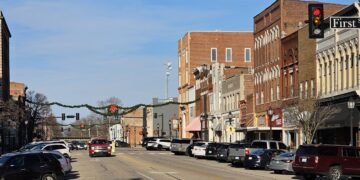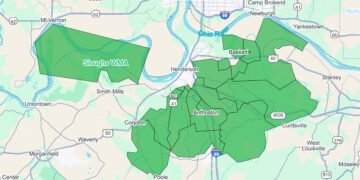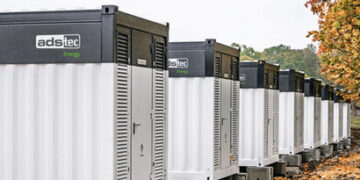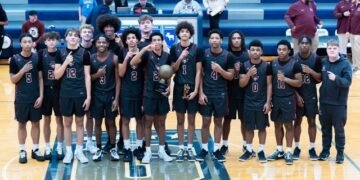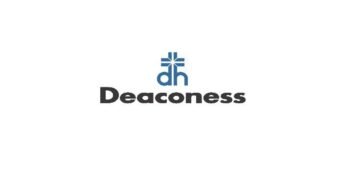The Henderson City Commission that will be sworn in in January will have to decide among a list of projects with a finite amount of funding.
Though the reason for the commission’s Tuesday special called meeting was to discuss and review capital projects and bonding capabilities, the reality of it is that this current group of commissioners won’t be dealing with the upcoming capital projects.
When those decisions are made, the commission will look different, though how different will be answered by the Nov. 5 election. Current Commissioner Austin Vowels did not seek re-election, although commissioners Nick Whitt, Robert Pruitt and Rodney Thomas are. Four challengers are also seeking a seat, including Tom Williams, Kelsey Hargis, Jay Randolph and Dwight Williams.
At Tuesday’s special called meeting, Finance Director Chelsea Mills laid out the city’s current bonding and fund reserve levels, while Assistant City Manager Dylan Ward detailed projects that officials have put on a wish list—some of which have funding already assigned, some of which have reserves fund committed and others of which funding has not yet been designated.
The total for the projects that have an estimated cost associated with them is $33.5 million. But there were other projects on the list—constructing a loop road paralleling I-69 that would connect Wathen Lane to Barret Boulevard, future additions to the athletic complex and projects that may come out of a Parks and Recreation Master Plan—that don’t have an estimate associated with them yet.
Two ways to pay for the projects were discussed. One is through reserve funds. Mills said Tuesday that the total fund balance as of June 30 was $24.4 million.
Of that the city commission directed Mills to set a policy that three months of the city’s yearly operating costs must be always held back in reserves for emergencies, one practice that helps the city keep a high credit rating.
According to the numbers mentioned at the meeting, operating costs are between $36 and $39 million. Three months’ operating costs would be $9 million-plus. Keeping that back leaves reserves at $15 million.
Another way to pay is through bonding. Mills said the city currently has about 25% of its legal debt limit of bonding remaining. According to a document supplied by Mills, the general bonded debt has increased from $44 million in 2020 to what will be about $110.8 million in 2025. This increase has come from bonding the city has released to pay for a number of projects, such as the new athletic complex on Airline Road and Fire Station #1 on Second Street.
The Kentucky Constitution says that cities the size of Henderson shall not incur indebtedness of more than 10% of its value of taxable property. In 2025, the legal debt limit for Henderson will be $148 million. Of that, the city can release bonds for $37.4 million and still stay under that threshold, according to Mills’ report.
City commissioners and staff say the city is in good financial shape. That’s true. It still has a high credit rating and reserve funds are at an acceptable level. And it’s not gone over its debt limit, though the amount it can use is decreasing.
It’s still worth a closer inspection. A look at the list below will show that all the projects listed will either be something residents will enjoy, make the community safer or provide necessary convenience.
But there’s no money tree growing in Central Park. And as it stands, the city doesn’t have enough to pay for all of them. Take a look.
The following projects Ward highlighted are accounted for:
• Fire station #1, cost of $11.5 million, paid for by 2024 bonding
• Economic/retail development, $1.5 million, planned payment from reserve funds
• Newman Park Sports Pavilion, $750,000, planned payment from reserve funds
• The design of the loop road to parallel I-69, $200,000, planned payment from reserve funds
• Audubon Park Conference Center, $2.6 million, planned payment from reserve funds
• Landfill closure, $3.5 million, planned payment from Sanitation Dept. investments
There are also projects that are unaccounted for, such as:
• The implementation of projects on a Parks Master plan, the cost depends on projects, and it’s unknown the number of projects because the plan has not yet been completed
• New city ERP software (city-wide software), $4 million, reserves
• New Transfer Station for (trash and waste), $4 million, no planned funding
• Turfing of two multipurpose fields at sports complex, $4 million, no planned funding
• New Fire Station #2, $5.5 million, no planned funding
• Construction of the Loop Road, no estimate yet, possibility of state or federal grant funding
• Future Sports Complex phases, no estimate yet
What’s more, the projects Ward described Tuesday are just those mentioned in the meeting. There are more—vehicle replacements, sidewalks, building maintenance. And there are projects down the road, say a new swimming pool or renovations to the current one (which may end up being within the parks master plan) and most likely projects that no one has yet thought about. Whew!
Give credit where it’s due—city staff and the commission have compiled a list full of projects that will improve the community.
Now comes the hard part, a job most likely full of wrangling and maneuvering that will fall on the next commission and probably the commission after that.
What will be cut? What will be kept? And how will it be paid for? Or will the city find a new revenue stream? And all of it with a new city manager.
Good luck.




